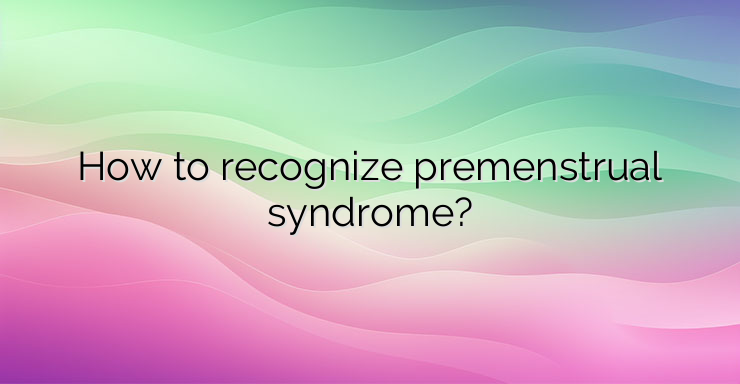Premenstrual syndrome is characterized by significant clinical and psychological manifestations that occur during the luteal phase of the menstrual cycle. They lead to distress for the body and disruption of its functional capacity. Symptoms usually resolve on their own within a few days after the onset of menstruation. It has been found that worldwide 47.8% of women of reproductive age are affected by premenstrual syndrome and in 20% of them the condition significantly worsens the quality of life. The rest have mild to moderate symptoms. Symptoms of PMS include: Changes in appetite; Weight gain; Stomach ache; Back pain; Headache; Breast enlargement and tension; Nausea; Constipation; Anxiety; Irritability; Fatigue that is not favorably affected by rest; Sudden changes in mood; Feeling angry. The causes of premenstrual syndrome are not fully understood. Symptoms of the condition appear at the same time as hormonal changes within the menstrual cycle. For this reason, it is assumed that high levels of estrogen and low levels of progesterone contribute significantly to the development of the condition. It is believed that serotonin is also important for the development of the manifestations. Estrogens include 3 main hormones – estrone, estradiol and estriol, of which estradiol is the most powerful. Estrogen levels change during the luteal phase and this is what causes mood swings in women. In addition, studies have shown that levels of serotonin – the hormone of happiness, increase within the period between days 7-11 and 17-19 of the menstrual cycle. This highlights the relationship between mood changes in premenstrual syndrome and variations in serum concentrations of estrogen and serotonin. Falling estrogen levels trigger the release of norepinephrine from the hypothalamus. This affects the balance of other mediators, including acetylcholine, dopamine and serotonin. All these changes lead to insomnia, fatigue and depression, which are specific to PMS. Another characteristic feature of the condition is an increased appetite for sweets, junk food and coffee. The duration of the manifestations varies from a few days to 2 weeks. Symptoms often begin to worsen 6 days before the onset of menstruation and reach their peak within 2 days before menstruation. Feelings of anger and irritability are the most common complaints that start the earliest, even before the other symptoms appear. In some cases, the duration of the manifestations can be significant and there may be two consecutive menstrual cycles during which the characteristic complaints appear. However, it is usually typical to observe a period in which the symptoms subside. The difference in the influence of estrogen and progesterone in worsening complaints is not yet fully understood. It is assumed that the daysin which the characteristic manifestations usually occur are those in which serum concentrations of progesterone greatly exceed those of estrogen. Observations have shown that taking estrogen preparations worsens the symptoms of premenstrual syndrome, while the administration of estrogen antagonists relieves breast pain – mastalgia. Serotonin, in turn, has a key role in regulating mood and behavioral manifestations. This highlights its involvement in the onset of premenstrual syndrome symptoms. Research continues to clarify whether PMS symptoms such as bloating, breast tightness and muscle pain are the result of reduced physical tolerance in dysphoric states or are due to hormonal changes. References: https://www.ncbi.nlm.nih.gov/pmc/articles/PMC3118460/


Leave a Reply